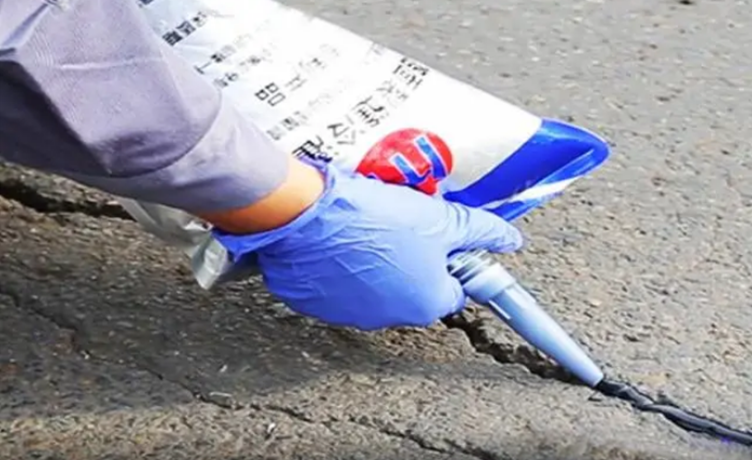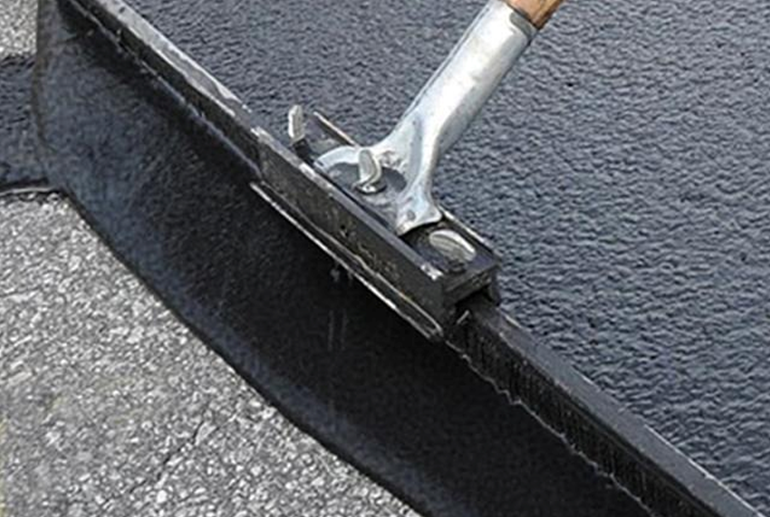Cracks are one of the most common diseases of asphalt pavement and occur throughout the life of the road. Correctly treating cracks can extend the life of your road. Here are a few common governance methods.

1. Sealing glue
This method is more commonly used and mainly targets transverse cracks and longitudinal cracks in roads. Use self-leveling cold-grouting materials or hot-grouting materials to seal and waterproof cracks, which can prevent water and seepage and prevent base and structural damage. Moreover, the construction cost is low, only 1/6 of digging and patching the road surface. This process requires the cracks to be completely dry and the crack walls to be completely cleaned. The disadvantage is that the one-component caulking glue takes 24 hours to fully cure. Cracks with a width less than 2 cm can be opened to traffic directly, while cracks with a width greater than 2 cm need to be closed to traffic for 24 hours after filling.

2. Seam processing method
Mainly using "pavement seam tape", a new type of pavement crack repair material, the material is asphalt base, has a self-adhesive effect and can be integrated with the asphalt road. It has the advantages of good wear resistance, strong water sealing ability, low cost, high elasticity, and can be turned and pasted at will according to the direction of the crack. Because of its simple construction process, high construction efficiency, long service life, and low skill requirements for maintenance personnel, it is adopted by more and more road maintenance agencies. When using seam tape, the crack must be completely dry. The disadvantage of this process is that cracks with a width greater than 1 cm must be filled with fine-grained asphalt sand or rolled up seam tape, otherwise the seam tape will easily crack and cause secondary cracks and water seepage.

3. Surface sealing method
This method mainly targets minor cracks and network cracks, and can play a role in preventive maintenance of asphalt pavement. The main products currently on the market are silicone asphalt mist sealants and micro sealants. After use, it can solve many problems such as pavement aging, oil depletion, discoloration, water seepage, fine cracks, slight network cracks, slight aggregate loose loss, and pavement pollution. Quickly restores the toughness and elasticity of the pavement structure, providing long-lasting sealing performance. This process is only suitable for fine cracks or network cracks with a width less than 3 mm. For cracks with a width greater than 1 mm, use a brush to dip in the fog sealant material and apply it intensively, trying to make the cracks full of material, and then spray the fog sealant uniformly.
No matter what kind of crack treatment process, there is only one core purpose, which is to seal and waterproof. Because it has to withstand long-term wind, sun, rain, and traffic loads, it is not easy to be waterproof, and it also requires strong weather resistance and durability. Filling treatment processes such as joint filling glue or micro-sealing must meet the requirements of strong adhesion between the filler and the crack wall. The filling material should have good elasticity to offset the crack width displacement changes caused by temperature changes or external forces. At the same time, it must have an excellent elastic recovery rate to prevent the filler from losing elasticity and bulging in the cracks, causing it to be crushed by wheels or punctured by foreign objects, causing cracks.
In the treatment of road crack diseases, prevention should be given priority and prevention and treatment should be combined. Appropriate technical measures should be adopted and reasonable maintenance methods should be selected to better maintain the performance of the road and extend the service life of the road.